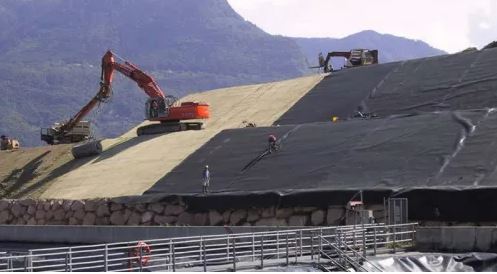Dams play a crucial role in water resource management, providing essential functions such as water storage, flood control, and power generation. Ensuring the structural integrity of dams is paramount, and one key component that contributes to this is the Liner for Dam Lining. In this article, we will explore the significance of liners in dam construction, their various types, and the role they play in enhancing the efficiency and sustainability of water storage infrastructure.
Importance of Liners in Dam Lining:
Water Seepage Prevention: One of the primary functions of a dam liner is to prevent water seepage through the dam structure. Liners act as impermeable barriers, ensuring that water does not infiltrate the dam and compromise its stability.
Protection Against Erosion: Geomembrane Liners for Dam Lining provide protection against erosion caused by the movement of water. This is particularly crucial in areas with high flow rates or turbulent conditions, where erosion could weaken the structure over time.
Preservation of Water Quality: Dam liners contribute to the preservation of water quality by preventing the leaching of minerals and contaminants into the stored water. This is essential for maintaining the integrity of water intended for domestic, agricultural, or industrial use.
Enhanced Structural Integrity: The use of liners significantly enhances the overall structural integrity of a dam. By mitigating issues related to seepage and erosion, liners contribute to the longevity and reliability of the dam infrastructure.
Environmental Protection: Dam liners play a role in environmental protection by minimizing the impact of water storage on surrounding ecosystems. Preventing seepage and maintaining water quality help preserve the ecological balance in the vicinity of the dam.
Types of Liners for Dam Lining:
HDPE (High-Density Polyethylene) Liners: HDPE liners are popular for dam lining due to their high chemical resistance, flexibility, and durability. They are effective in preventing seepage and are relatively easy to install, making them a preferred choice in many dam construction projects.
PVC (Polyvinyl Chloride) Liners: PVC liners are known for their versatility and adaptability to various environmental conditions. They are resistant to UV radiation, chemicals, and abrasion, making them suitable for a range of dam lining applications.
EPDM (Ethylene Propylene Diene Monomer) Liners: EPDM liners are widely used for their excellent elasticity and weather resistance. They are particularly effective in withstanding extreme temperatures and are often chosen for dams located in diverse climatic conditions.
GCL (Geosynthetic Clay Liners): GCL liners consist of layers of geotextile and bentonite clay, providing a natural and environmentally friendly solution for dam lining. These liners offer effective seepage control and are often used in combination with other liner types.
Bituminous Liners: Bituminous liners, also known as asphaltic liners, are made from bitumen or asphalt. They provide an impermeable barrier against water seepage and are commonly used in dam construction projects.
Installation and Maintenance:
Professional Installation: Proper installation of dam liners is crucial for their effectiveness. Professional installation ensures that the liners are correctly positioned and securely sealed, minimizing the risk of seepage.
Regular Inspection and Maintenance: Regular inspection and maintenance are essential for ensuring the continued effectiveness of dam liners. Any signs of damage or wear should be promptly addressed to prevent potential issues.
Our Service:-
Conclusion:
In the realm of dam construction, the use of liners for dam lining is a fundamental practice aimed at enhancing the structural integrity, functionality, and environmental sustainability of water storage infrastructure. As technology and materials continue to advance, the choice of liners becomes increasingly crucial in ensuring the longevity and effectiveness of dams worldwide. Whether it's preventing water seepage, protecting against erosion, or preserving water quality, the role of dam liners is indispensable in the pursuit of efficient and sustainable water resource management.





Comments